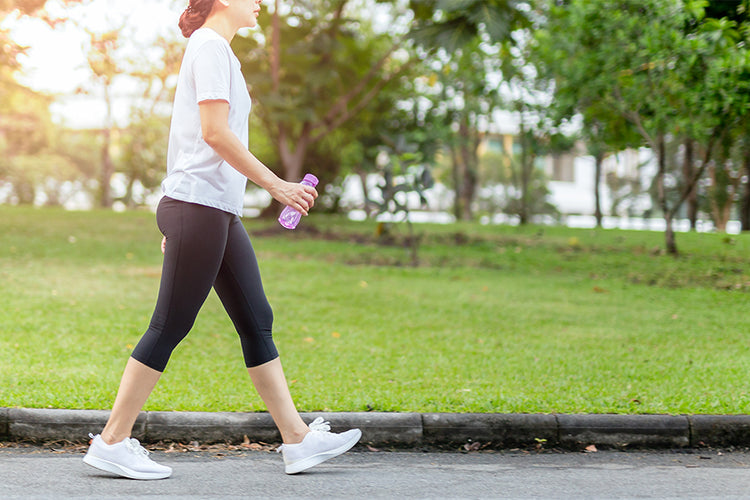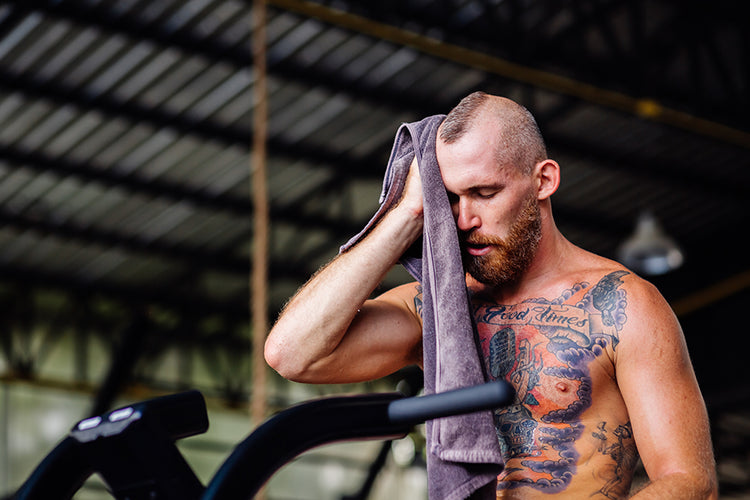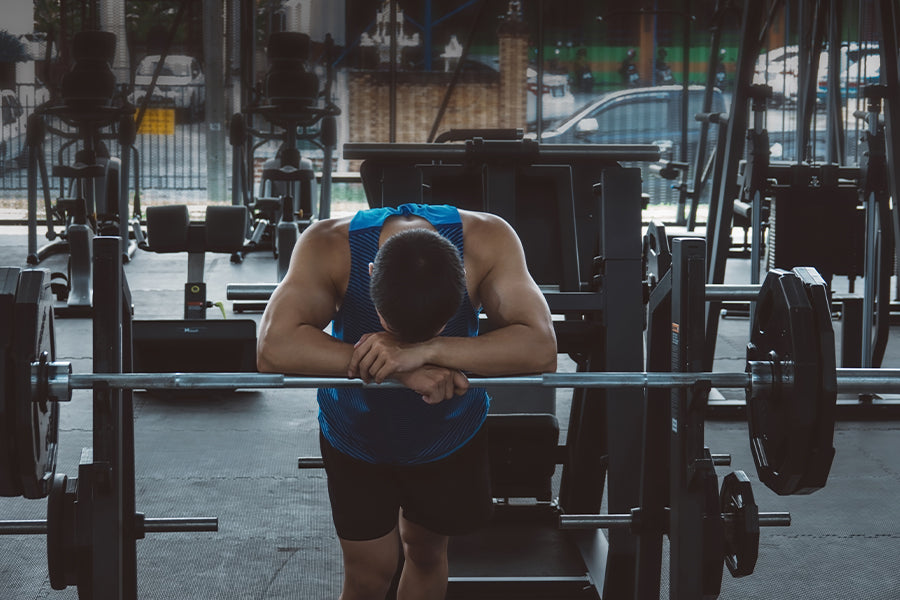Have you ever wondered whether you should exercise when you're feeling unwell? Many of us face a common dilemma, especially when we're committed to maintaining a healthy lifestyle. After all, exercise is supposed to be good for us, right?
Well, the answer can be complicated. While regular exercise can provide numerous health benefits, exercising when we're sick can sometimes do more harm than good. It's essential to understand when to exercise and rest to ensure a speedy recovery and prevent further complications.
This article will delve into exercising safely while sick and recovering properly. We'll explore the different signs to look out for before deciding to exercise, the types of exercises that are safe to do when you're under the weather, the types of exercises to avoid, and the importance of proper recovery after exercise.
We'll also discuss the significance of consulting a doctor before returning to your regular exercise routine to ensure that you don't risk further health problems.
By the end of this article, you'll better understand how to take care of yourself and make informed decisions about your health and fitness even when you're not feeling your best.
If you're not into reading here is a great video by one of my favorite YouTubers Jeff Nippard explaining this very topic in detail. Check out the video
Signs to Look Out for Before Exercising

Before you decide to exercise when you're feeling unwell, it's essential to pay attention to the signs your body is giving you. Knowing when to rest and when to exercise can make a big difference in how quickly you recover from an illness. Here are some common symptoms of cold, flu, and other illnesses that you should watch out for:
Fever
A fever is one of the most common signs of your body fighting off an infection. If you have a fever, your body works hard to fight the illness, and it's best to rest until your temperature returns to normal.
Exercising with a fever can raise your body temperature even higher, putting you at risk of dehydration and heat exhaustion. Additionally, a fever can indicate a contagious illness, so it's best to avoid public places, including gyms until your fever subsides.
Chest Congestion
If you're experiencing chest congestion, coughing, or shortness of breath, you must avoid exercise that requires a lot of exertion. Exercise can worsen these symptoms and potentially lead to further respiratory problems.
Instead, opt for low-impact exercises, such as yoga, light stretching, or walking, that won't exacerbate your symptoms.
General Fatigue
When you're feeling weak and exhausted, it's your body telling you that it needs rest. Exercising when you're fatigued can put you at risk of injury and prolong your recovery.
Pushing yourself to exercise when fatigued can also weaken your immune system, making it harder for your body to fight the illness. Instead, take some time to rest, and focus on getting enough sleep and staying hydrated.
Body Aches and Pains
If you're experiencing body aches and pains, you must avoid high-impact exercises that can stress your joints and muscles.
Instead, focus on low-impact exercises like walking or gentle stretching. These exercises can help improve circulation, reduce stiffness, and promote healing.
Stomach Issues
If you're experiencing nausea, vomiting, or diarrhea, it's best to avoid exercise altogether. Exercising with these symptoms can cause dehydration and further digestive issues.
Focus on staying hydrated and getting plenty of rest. Once your symptoms have subsided, ease back into exercise slowly, starting with low-impact activities like walking or gentle yoga.
It's important to remember that everyone's body is different, and you should always listen to your body when deciding whether to exercise or not.
If you're unsure, it's always better to err on the side of caution and rest until you're feeling better. When in doubt, consult your doctor to determine what exercise is safe for you while you recover from your illness.
Types of Exercises to Do While Sick
While resting when you're sick is generally best, some gentle exercises can benefit your recovery. The key is to listen to your body and avoid high-impact or strenuous activities that could worsen your symptoms.
Here are some exercises that can be safe while recovering from an illness:
Walking

Walking is a low-impact exercise that can help improve circulation, boost mood, and promote healing. If you're feeling up to it, take a short walk outside or on a treadmill at a slow pace. Start with a few minutes and gradually increase your time as your body allows.
Stretching

Gentle stretching can help alleviate muscle stiffness and soreness, promote relaxation, and improve flexibility.
Try basic yoga poses or simple stretches targeting the areas where you feel tension or discomfort.
If you want to target specific areas of tension or discomfort in your legs, a Foot Leg Stretcher for Gymnastics can be a great tool. With its adjustable design, a foot-leg stretcher allows you to customize your stretch and gradually increase your flexibility.
Consider trying stretching out on a comfortable and supportive Yoga Mat. With its cushioned surface, a yoga mat provides the perfect foundation for relaxing and effective stretching.
Lastly, avoid any stretches that require a lot of twisting or bending, and never force yourself into a pose that doesn't feel comfortable.
Tai Chi or Qi Gong

Tai chi and Qi Gong are low-impact exercises focusing on gentle movements and deep breathing. These exercises can help improve balance, reduce stress, and promote relaxation. You can find instructional videos online or attend a class if you feel up to it.
Resistance Band Exercises

Resistance Loop Bands for Workout are excellent for gentle strength training while recovering from an illness. They come in different resistance levels, so you can choose a band that feels comfortable for your level of strength. Focus on simple exercises that target your major muscle groups, such as bicep curls, shoulder presses, or leg extensions.
Breathing Exercises

Taking slow, deep breaths for a few minutes can help reduce stress, relax your body, and improve blood flow. You can try this by sitting comfortably or trying different yoga breathing techniques like alternate nostril breathing.
Remember, the goal of exercising while you're sick is not to push yourself to your limits but to help your body recover. Always pay attention to your body and stop exercising if it hurts or makes you uncomfortable, drink enough water, and take ample rest while recovering from an illness.
Related Article: 9 Best Resistance Band Workouts for Your Lower Body
Types of Exercises to Avoid While Sick
While some gentle exercises can benefit your recovery, certain exercises should be avoided when you're sick. These exercises can be too strenuous and may cause more harm than good.
Here are some types of exercises to avoid while you're recovering from an illness:
High-Intensity Workouts

High-intensity workouts like running, cycling, or weightlifting can put a lot of stress on your body and worsen your symptoms.
These workouts can also compromise your immune system, making it harder for your body to fight the illness. It's best to avoid these exercises until you fully recover.
Team Sports

Team sports can be a fun way to stay active, but they expose you to other people's germs and can be too demanding on your body when you're sick. Avoid team sports until you're feeling better to prevent spreading your illness to others and allow your body to focus on recovery.
Hot Yoga or Bikram Yoga

Hot or Bikram yoga involves practicing yoga in a heated room, which can be dangerous when sick. The heat can cause dehydration and may make it harder for your body to regulate its temperature. It's best to avoid hot yoga until you're fully recovered.
Heavy Lifting

Heavy lifting can put a lot of strain on your body, which can be dangerous when you're sick. Avoid lifting heavy weights until you feel better to prevent injury and allow your body to focus on recovery.
Recovery After Exercise
After exercising while sick, taking the necessary steps to allow your body to recover fully is crucial. First and foremost, hydration is critical. Drinking plenty of fluids before, during, and after exercise helps keep your body hydrated and supports recovery.
Rest is also crucial for recovery when you're sick, so give your body plenty of time to rest and recharge. Eating nutritious foods high in vitamins and minerals, such as fruits, vegetables, lean protein, and healthy fats, can also support your body's recovery process.
In addition to these steps, gentle stretching after exercise can help alleviate muscle soreness and prevent stiffness. Focus on stretches that target the areas where you feel the most tension or discomfort.
It's also essential to monitor your symptoms after exercising. If you feel worse or notice any new symptoms, it may be a sign that you pushed yourself too hard. Scale back your exercise routine accordingly and consult your doctor if you have any concerns.
Exercising while sick should be done cautiously and only if you feel up to it. Your body needs time to rest and recover when you're ill, so don't push yourself too hard. Listen to your body and give it the care it needs to heal fully.
By following these recovery tips, you can help ensure that your body can fully recover from illness and get back to your regular exercise routine safely and healthily.
Related Article: 8 Ways to Relieve Muscle Soreness After Exercise
The Bottom Line
Exercising while sick requires a delicate balance between maintaining your fitness routine and allowing your body to recover. Pay attention to the signs and symptoms of illness and adjust your exercise routine accordingly. If you do decide to exercise while sick, you must focus on low-impact activities such as stretching, yoga, or light cardio and avoid high-intensity or strenuous exercise.
Moreover, you must pay special attention to recovery when exercising while sick. Hydration, rest, and proper nutrition are critical components of recovery. Give your body time to rest and recover fully, and listen to your body's needs. Gentle stretching can help alleviate muscle soreness and prevent stiffness, and monitoring your symptoms can help you gauge how much exercise is appropriate for your current condition.
Overall, it's crucial to prioritize your health and safety when exercising while sick. By following the guidelines in this article and paying close attention to your body's needs, you can exercise safely and effectively while supporting your body's recovery process. Remember that taking care of your body is crucial for long-term health and fitness and that allowing yourself time to rest and recover when sick is a crucial part of that process.








